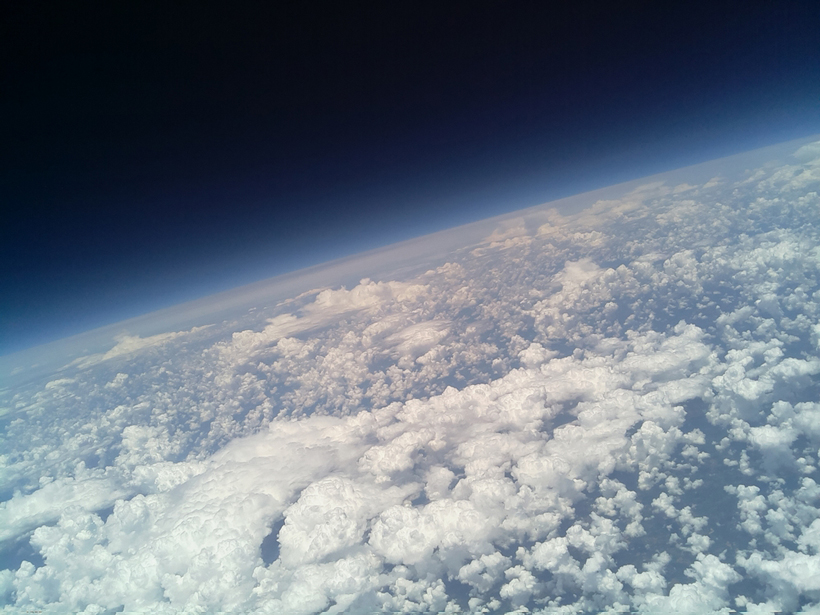Low-frequency “infrasound” waves are too deep for a human to hear. These waves often propagate for thousands of kilometers, transmitting information on both natural and anthropogenic phenomena, such as earthquakes and explosions.
The waves also transfer energy between the lower and upper atmosphere. Although the vast majority of sensor networks designed to pick up infrasound exist on Earth’s surface, microphones harnessed to balloons that drift in the atmosphere have the potential for much greater sensitivity because they’re not exposed to wind and they’re farther away from confounding sources of anthropogenic noise. Atmospheric microphones can cover regions that lack surface sensors, such as the open ocean.
A workshop at Sandia National Laboratories in January 2017 convened teams that study such airborne geoacoustics to discuss recent progress in the field, the present state of the science, and future directions. Attendees discussed topics ranging from the remote detection of human activity and geohazards to applications of balloon-lofted microphones on missions to other planets.
Having dedicated geoacoustic flights would assist in noise control, increase scientific gain, and permit more targeted initiatives.
During the workshop, participants noted that over the last 2 years, experiments have relied on “free rides” on other institutions’ balloons. As a result, data from several microphone flights contained high levels of nonacoustic interference correlated between sensors. Although improved system designs appeared to mitigate the problem, the cause of the interference remains unknown. Participants noted that having dedicated geoacoustic flights would assist in noise control, increase scientific gain, and permit more targeted initiatives.
Other topics slated for further research include noise characterization, instrument standardization and calibration, mission design, multisensor networks, and improved means of sensing acoustic waves at altitude.
The workshop provided a forum to discuss instrument requirements to determine acoustic direction of arrival, including a horizontal sensor network deployed at altitude, multiple free-flying balloons, and new instrument concepts capable of air motion detection. Many attendees have developed their own instrument packages, and participants agreed that they should be tested at ground facilities and flown together.
Collaboration was a common theme throughout the workshop, and participants concluded that collaborative experiments increase scientific gain while diminishing risk and costs. Collaborative research could take many forms: flights over well-characterized ground acoustic sources, deploying multiple independent balloons to facilitate signal discrimination and interpretation, and fielding ultralong-duration (months to years) balloons.
Such cooperation, attendees noted, could yield the following results:
- quantification of the poorly understood acoustic wave field in the upper troposphere/lower stratosphere
- determination of the acoustic energy flux into the upper atmosphere
- detection of small meteor strikes in the atmosphere
- examination of acoustic phenomena that seldom reach the ground
- determination of acoustic sources from ionospheric fluctuations
The continued development of geoacoustic research could enhance the Comprehensive Nuclear-Test-Ban Treaty’s International Monitoring System.
Results could have a wide variety of applications, attendees noted. For example, the continued development of geoacoustic research could enhance the Comprehensive Nuclear-Test-Ban Treaty’s International Monitoring System. Participants also speculated on the kinds of information that could be gained from microphones on balloons launched into Venus’s atmosphere.
Thanks to these potential applications, participants agreed that studies of airborne geoacoustics could potentially transform infrasound research.
Acknowledgment
Sandia National Laboratories is a multimission laboratory managed and operated by Sandia Corporation, a wholly owned subsidiary of Lockheed Martin Corporation, for the U.S. Department of Energy’s National Nuclear Security Administration under contract DE- AC04-94AL85000.
—Daniel C. Bowman (email: [email protected]), Sandia National Laboratories, Albuquerque, N.M.; Eliot F. Young, Southwest Research Institute, Boulder, Colo.; and James A. Cutts, Jet Propulsion Laboratory, Pasadena, Calif.
Citation:
Bowman, D. C., E. F. Young, and J. A. Cutts (2017), Geoacoustics takes to the sky, Eos, 98, https://doi.org/10.1029/2017EO072479. Published on 03 May 2017.
Text not subject to copyright.
Except where otherwise noted, images are subject to copyright. Any reuse without express permission from the copyright owner is prohibited.

